The Ultimate Buying Guide to Crushed Stone and Gravel
Item #4 - Quarry process - Base gravel #3.
Do these random-sounding names and numbers mean anything to you?
Maybe, but if not, you are not alone.
These are the names of different types of gravel and stone. We understand entirely if you are confused about the various gravel and stone types! Sometimes, a particular kind of gravel has several names or even just a number to identify it! There are also lots of styles to remember.
But you want to educate yourself about the differences because obtaining the correct type of gravel matters! For instance, you use a very different kind of gravel for the base of a garage than you do for a French drain.
You don’t want to order the wrong sort and end up with a useless load of gravel!
Thankfully, Zimmerman Mulch is here to help!
We put together this article to help you sort through the different gravel and stone types, their names, and how to use them.
Ready to go?
Let’s dive in!
How is gravel different than crushed stone?
Let’s start with the basics.
What is gravel? More importantly, what is the difference between two commonly confused materials - gravel and crushed stone?
We often refer to all small, loose stones as “gravel.” But actually, there is a fundamental difference between gravel and crushed stone.
Gravel is a material of naturally occurring loose stone chunks with rounded edges. You can find it occurring naturally, perhaps in a gravel pit or river.
Crushed stone, on the other hand, is manufactured. Large rocks (often limestone) are processed in a stone crusher to make smaller pieces. Since it is artificially crushed, crushed stone usually has harder, sharper edges than gravel.
Now that we have clarified that difference let’s look at how gravel and crushed stone are further classified.
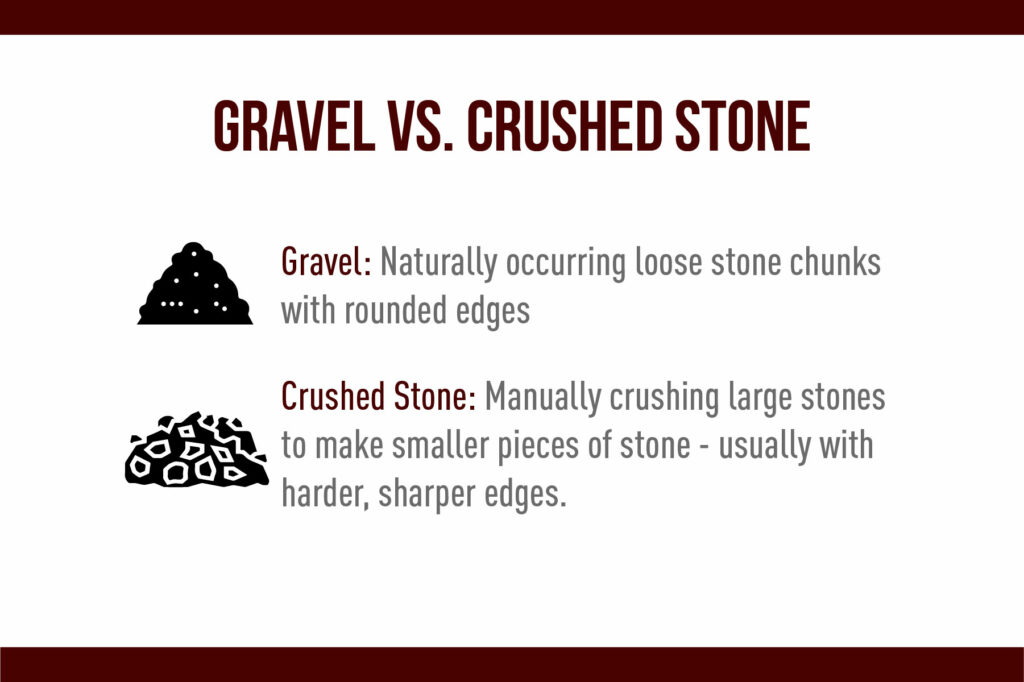
How Stone and Gravel Are Classified
Several other characteristics can further classify gravel and rock:
Gravel And Stone Are Classified By Size
Gravel can be classified by particle size. This is the meaning of the numbers (such as #57 or #10) beside the names. The numbers refer to the screens used to sift the gravel and sort out different-sized pieces.
In general, as the number goes up, the size of the gravel goes down. Here’s an overview:
#1 - The largest size. Particles are usually between 2-4 inches in diameter.
#3 - Somewhat smaller than #1. Particles are usually ½ - 2 inches in diameter.
#5 - Particles are 1 inch or smaller in diameter.
#8 - Particles are ⅜ - ½ inches in diameter.
#10 - The smallest size, usually known as screenings or dust. These are the finer leftovers once the larger particles are sorted out.
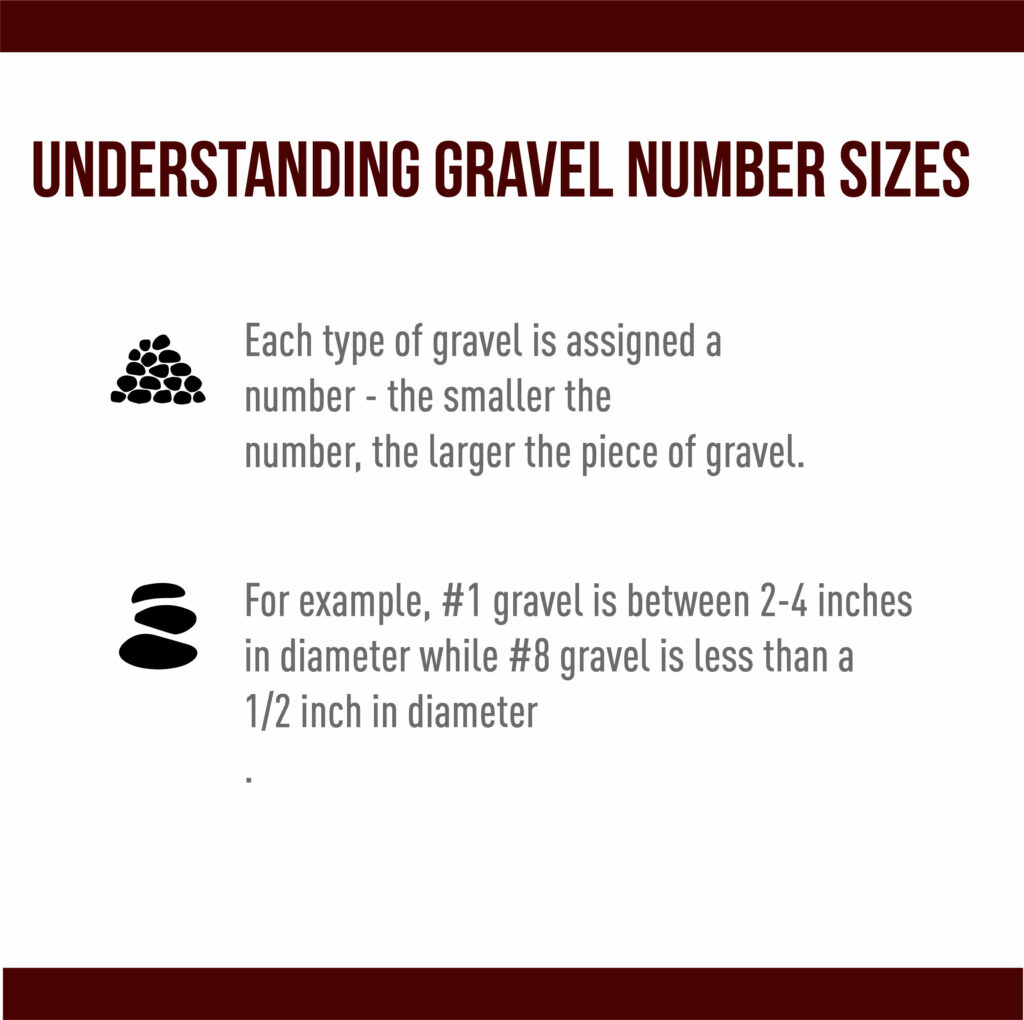
SPECIALTY TYPES
#57 - Contains particles about ¾ inch in diameter.
#67 - Contains particles ¾ inch or less in diameter.
#411 - #57 stone and #10 stone screenings mixed together.
There are also more specialty types, but these are some common ones.
Classified by Washed vs. Unwashed Gravel
Some gravel is still mixed with stone dust or clay and sand. This helps bind the rock together and makes a firm, compacted base for building projects. Other gravel is washed to get rid of unwanted dirt or silt. This gravel has a cleaner look and drains better than unwashed gravel.
However, washed stone is not to be confused with clean stone. Clean stone is screened to remove most of the stone dust. It is not necessarily washed to remove all of it.
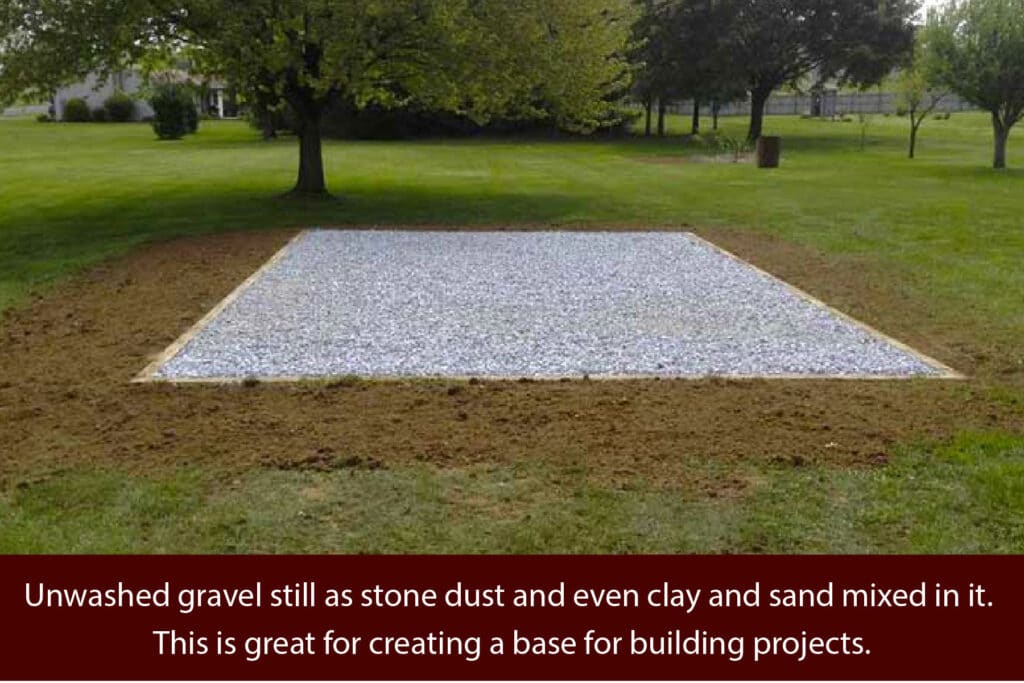
Type of Stone
Needless to say, there are lots of different types of rock that can be gravel! Some common types of rock for gravel include:
- Limestone
- Sandstone
- Basalt
- Granite
Types of Stone and Gravel
Now that we have looked at some of the basics, let's move on to discovering some of the most common types of gravel you could use for your flower beds, driveways, or construction project.
We will start with several types of crushed stone and then move on to different types of gravel.
Types Of Crushed Stone
There are many different types of crushed stone, and we understand how tough it can be to keep them all straight! Since many are just associated with a number, the names aren't much help.
Here are the most common types of crushed stone that you will encounter and their typical uses:
Incredibly versatile, crushed stone #57 is the most commonly used type of crushed stone. It is also cheap and easily accessible.
#57 works well for driveways, as a base for building or drainage projects, or as an aggregate in concrete.
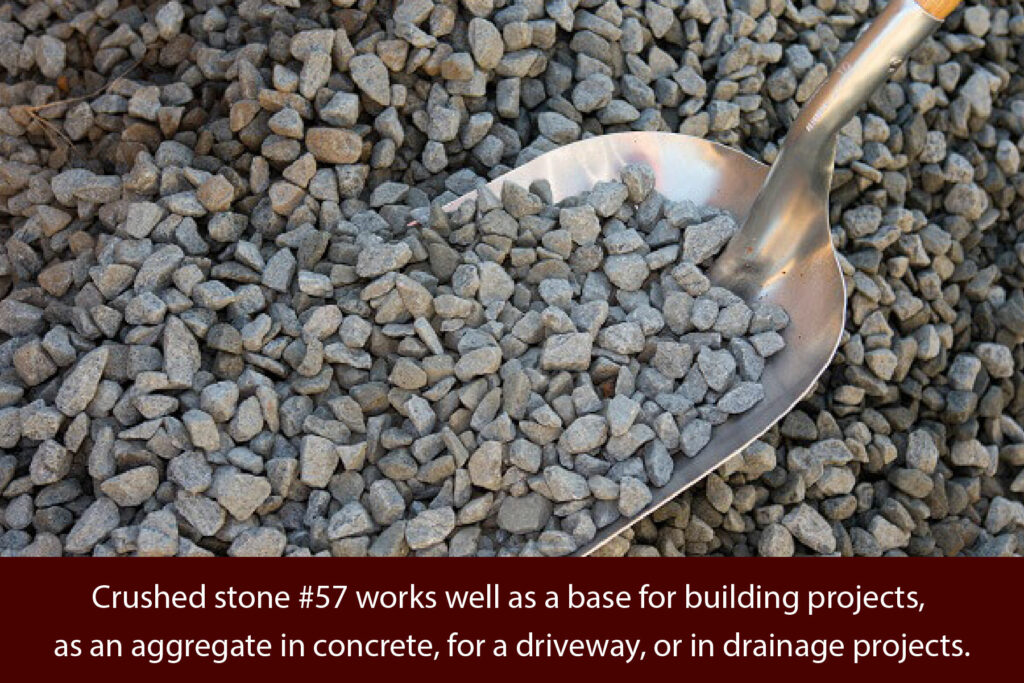
#57 crushed stone can be made of different rock types (granite, limestone, basalt, etc.), with limestone being the commonest. It has relatively coarse particles with diameters of ¾” to 1.” The name 57 refers to the size of the screen used to sift the stone.
- Crushed stone #411
#411 is a mixture of larger, fine, and dust particles. It combines #57 stone and #10 screenings and dust.
The small particles and dust help to solidify the material into a good, hard base. This makes it an ideal stone for a base for paver patios, stone walks, retaining walls, artificial turf, driveways, etc. Any application that calls for a good solid base will benefit from the use of #411 stone.
- Crushed stone #3
As the name suggests, #3 is one of the larger sizes of crushed stone. It is a popular type, usually made up of stones ½ - 2 inches in diameter.
Most gravel driveways comprise at least three different layers of stone, and #3 is a popular choice for a solid, 4-inch-thick base layer. This gives the whole driveway a strong foundation and ensures proper drainage.
#3 is also popular for railroad construction and any project that requires good drainage.
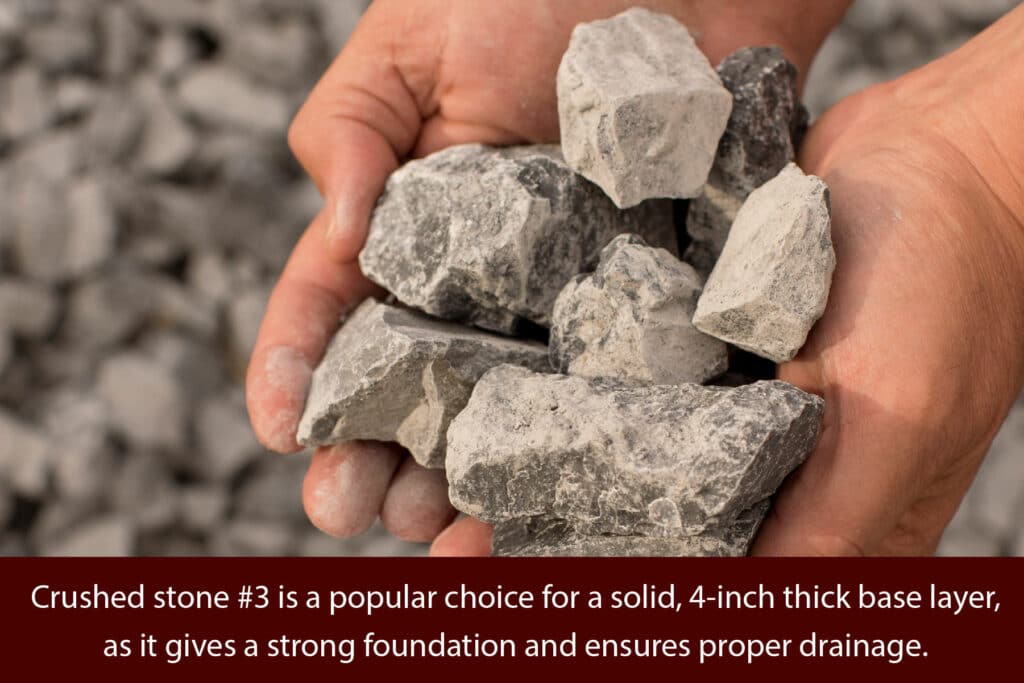
At Zimmerman Mulch, we have a line of #3 limestone that is a bit larger - approximately three inches in diameter. Check it out here.
We also have a four-inch stone that works perfectly for drainage or base layers. If you want to know more, take a look here!
- Item #4
Similar to crushed stone #411, Item #4 is a mixture. It is made by mixing golf ball-sized chunks of stone with sand and dirt. The sand and dirt help to compact the whole substance together. Like #411, Item #4 is a perfect base material for driveways, sidewalks, or patios.
You can get variations of Item #4, such as:
- Recycled Item #4 - Made from recycled blacktop, brick, or other stones.
- Quarry Item #4 - Made from crushed limestone.
- Gray or Blue Item #4 - Gray or blue
All types of Item #4 make solid base layers for many different projects!
- Stone dust
Stone dust comprises fine stone particles and dust, making it almost like coarse sand.
Because it is so fine, stone dust is not an excellent choice for areas with vehicles, but it is ideal for walking paths, as protection for underground utility lines, or to level areas to create a smooth base layer.
To know more, check out our stone dust and other limestone products at Zimmerman Mulch!
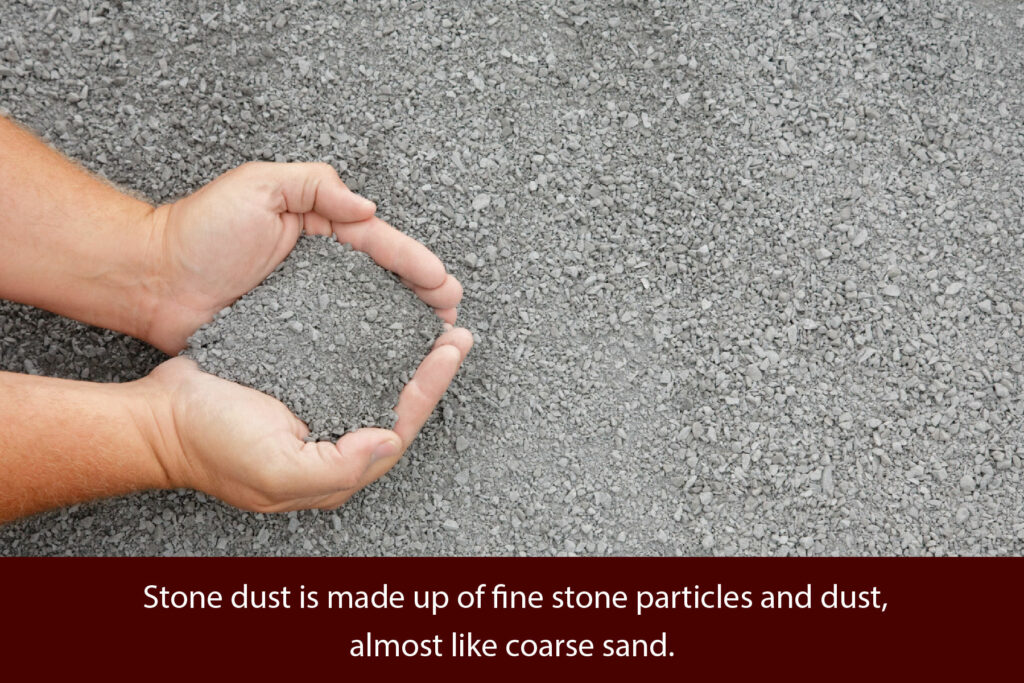
- Quarry process
Quarry process stone is also similar to #411 and Item #4. It’s a mix of smaller crushed stone and fine stone dust.
This type of stone mix is highly compactable and can be used for a base layer, landscaping, filling in low areas, or even sometimes for the top layer of a driveway. When used for driveway purposes, the quarry process compacts into a hard, semi-solid layer that can take large vehicle traffic.
The quarry process is also called:
- Crusher Run
- Dense-Grade Aggregate (DGA)
- Dirty stone
- Shoulder stone
- ¾ Blended Stone
Now that we have looked at several of the most common types of crushed stone let’s look at some common types of gravel.
Types Of Gravel
Gravel is often used for aesthetic purposes, while crushed stone finds its place more often as a construction material.
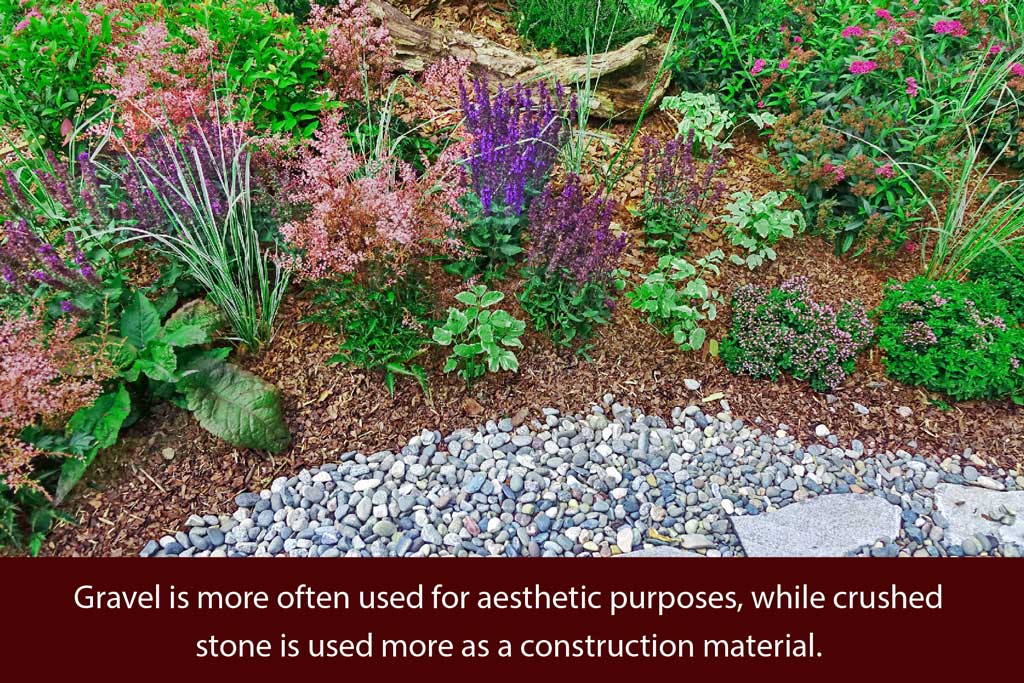
Why is this?
First, due to natural water erosion, gravel has smooth, rounded edges, making it a more comfortable surface to walk on.
And secondly, due to both those soft edges as well as its beautiful natural colors, gravel is usually more aesthetically pleasing than crushed stone.
Let’s look at a few common types of gravel.
- Pea gravel
Pea gravel consists of small, rounded stones roughly the size of, you guessed it, a pea. The stones come in various natural colors, such as brown, white, rust, gray, and even slightly translucent.
Pea gravel is attractive and easy on both feet and tires. It is, therefore, a popular choice for the top layer of a walk or driveway.
However, there is one drawback:
Since the stones are smooth and round, they don’t lock together like the jagged edges of crushed stones tend to do. They tend to get pushed around by vehicles, migrate off the driveway, or walk. They need edging to keep them in place.
- River rock
River rock is a gravel that has been smoothed and rounded by water. It is harvested from creeks and rivers, also known as creek stone. It is larger than pea gravel but comes in the same natural browns, tans, and grays. River rock can come in a range of sizes.
Like pea gravel, river rock tends to shift and move under the weight of vehicles due to its smooth, rounded edges. So while it makes an attractive choice for the top layer of a driveway, it may require some edging to keep it in place.
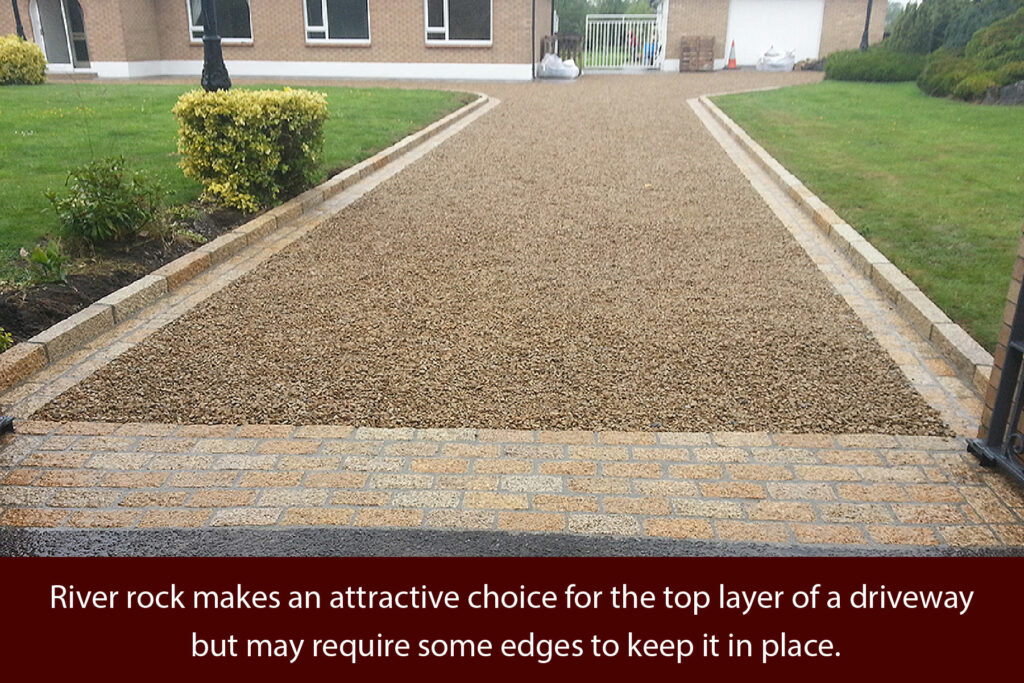
Smooth, colorful river rocks are an excellent choice for landscaping as they are pretty beautiful.
At Zimmerman Mulch, we carry several different types of river stones. Look through our selection and pick the one that gives you the desired look!
- Lava rock
Lava rock forms when hot lava cools while gases bubble through it. When this happens, a light, porous type of stone forms.
Lava rocks come in red, black, or gray and are suitable for landscaping. They can be used for weed control, aesthetic purposes, or even mulch.
Why do these rocks make good mulch?
The porous material helps hold and conserve water, maintain soil temperature, and prevent erosion. They also make a great, low-maintenance weed suppressant.
Lava rock is not a good construction, walkway, or driveway material.
- Marble chips
Want stunning aesthetic appeal?
Try marble chips for your walk or driveway!
Marble chips are exactly what their name implies - chipped marble. White and gray and shimmering in the sunlight create a gorgeous look!
Maybe you are wondering if marble chips are sharp, as their name seems to suggest. But don’t worry! Marble chips are not sharp and are perfectly safe to walk on.
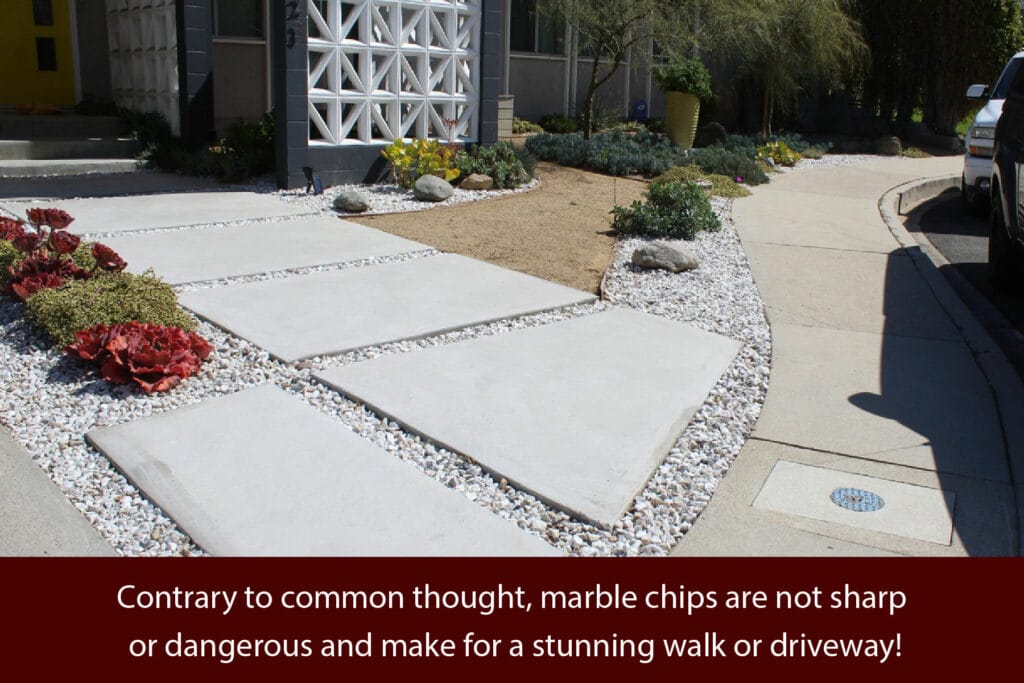
The only downside to marble chips is what you might expect would accompany a marble driveway - a hefty price tag!
Marble chips are a good choice for topping off a walkway or driveway, but, like pea gravel and river rock, they are smooth and tend to slip around. They will need edging to keep them in place. You don’t want all that expensive stone to disappear!
- Jersey shore gravel
Characterized by its golden color, Jersey Shore Gravel is small, smooth gravel similar to pea gravel. It comes in shades of tan, white, brown, and gold and looks like sand on a beach.
Jersey Shore Gravel is commonly used in the New England and Mid-Atlantic States as a top layer for driveways and walks. It will also need edging, as it is smooth gravel.
If you like the golden look, check out our gorgeous pearl pebbles! These decorative stones will spruce up any property.
conclusion
We hope this article helped you understand the different gravel and crushed stone types and how they are used!
If you need gravel or stone for a project, call us at Zimmerman Mulch!
We have many types of gravel and stone in stock - everything from dreamy white pearl pebbles to hardworking #3 limestone.
Whatever project you are working on, we’ve got you covered!
We make it easy to work with us:
- Choose your product (this article can help!)
- Purchase your product
- Install your product
Then sit back and enjoy!
Need more landscaping materials or other outdoor living supplies? We also carry:
And even more outdoor living commodities!
Give us a call today - we look forward to hearing from you.


